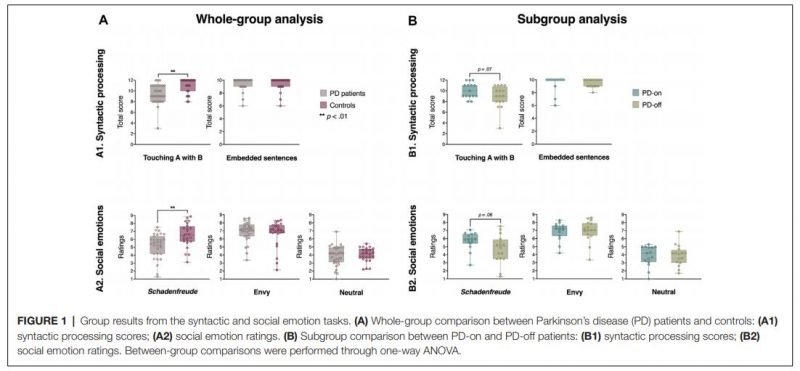23 de noviembre 2020
Resumen:
Frontostriatal disorders, such as Parkinson’s disease (PD), are characterized by progressive disruption of cortico-subcortical dopaminergic loops involved in diverse higher-order domains, including language. Indeed, syntactic and emotional language tasks have emerged as potential biomarkers of frontostriatal disturbances. However, relevant studies and models have typically considered these linguistic dimensions in isolation, overlooking the potential advantages of targeting multidimensional markers. Here, we examined whether patient classification can be improved through the joint assessment of both dimensions using sentential stimuli. We evaluated 31 early PD patients and 24 healthy controls via two syntactic measures (functional-role assignment, parsing of long-distance dependencies) and a verbal task tapping social emotions (envy, Schadenfreude) and compared their classification accuracy when analyzed in isolation and in combination. Complementarily, we replicated our approach to discriminate between patients on and off medication. Results showed that specific measures of each dimension were selectively impaired in PD. In particular, joint analysis of outcomes in functional-role assignment and Schadenfreude improved the classification accuracy of patients and controls, irrespective of their overall cognitive and affective state. These results suggest that multidimensional linguistic assessments may better capture the complexity and multi-functional impact of frontostriatal disruptions, highlighting their potential contributions in the ongoing quest for sensitive markers of PD.


